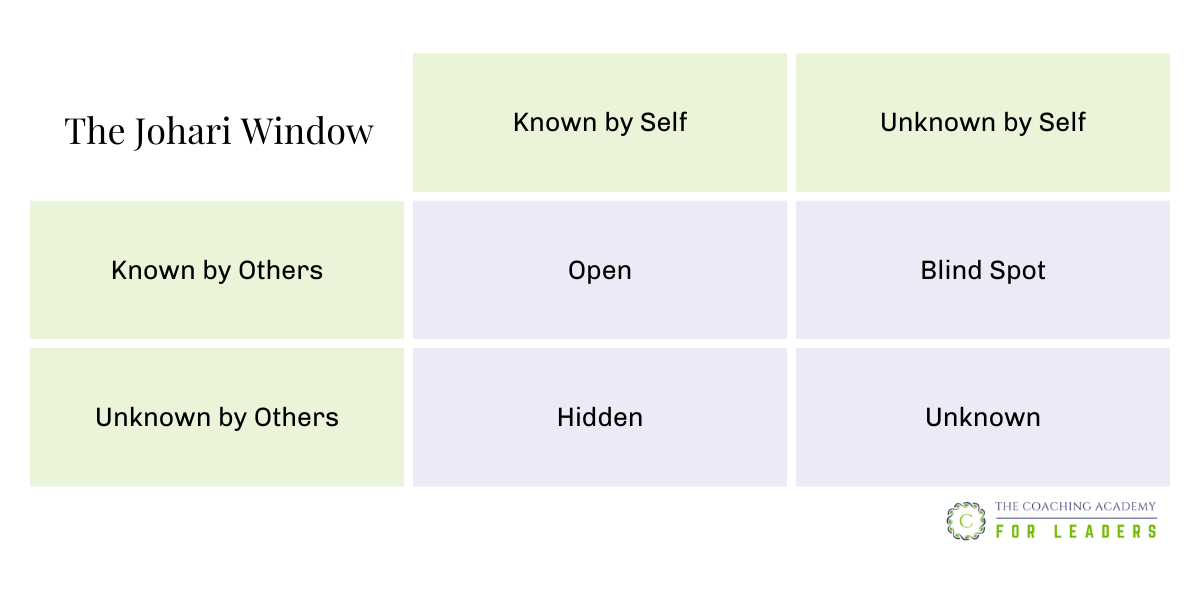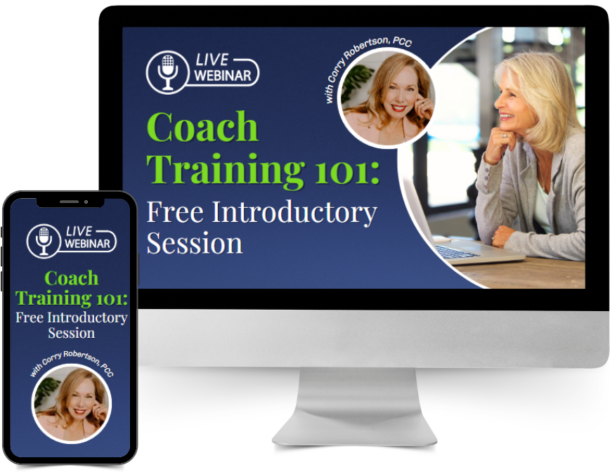“Coach the person, not the problem.” – Marcia Reynolds
Many of us have had that moment when we started questioning ourselves or what triggers may have caused us to react in a certain way. For instance, if we know that we are the kind of person who tends to get angry and lash out when triggered by a negative event, we can choose to express our emotions differently so as not to affect other people around us.
We call this self-awareness.
Self-awareness is our capacity to recognize and comprehend our characteristics, such as our personalities, values, beliefs, actions, thoughts, and emotions. It’s a state of mind where we put ourselves into focus. Self-awareness allows us to assess a situation or external factor and consider the best way to handle it.
For example, if I’m stuck in traffic, there’s nothing I can really do except wait for the cars to move. But if I’m self-aware enough not to allow this event to bother me, it’s easier to focus on other positive things simultaneously. Perhaps I can appreciate listening to a great song or enjoying the beautiful blue sky outside.
The point is that self-awareness helps us become more conscious of how we react, especially when we lack control. It’s a skill that all of us can develop; however, not many people do. And why is that? It may be because of our cognitive biases.
A cognitive bias is a thought process where a person assesses information based on a filter of personal experiences or beliefs, creating a subjective reality. As a result, we may develop decisions or actions that are considered self-centered or self-serving.
As a coach, supporting your client in recognizing their cognitive biases is an important part of their ability to reach the next level of potential that is available to them. With that being said, in this blog, I’ll discuss how to become an effective coach by evoking awareness in our clients.

Exploring Self-Awareness
As defined by the dictionary, self-awareness pertains to the conscious knowledge of one’s character, motives, feelings, and desires. It’s one of the earliest factors of self-concept to develop as part of our many capacities as rational human beings.
There is no scientific explanation stating that humans are naturally born with this skill; however, some studies suggest that young children develop self-awareness at an early age. Based on the Lewis and Brooks-Gunn experiment findings, self-awareness emerges at around 15 to 18 months of age and develops further by 21 to 24 months of age. Over time, our self-awareness also progresses, as suggested by psychologist Philippe Rochat.
Our self-awareness isn’t only impacted by its natural development when a person ages, instead, the way self-awareness is perceived is also affected by five primary key elements tied to different aspects of ourselves:
- Self-knowledge – pertains to our ability to focus on understanding who we are in terms of our motivations, beliefs, and values.
- Self-acceptance – is all about accepting and being kind to and compassionate toward oneself.
- Emotional intelligence – refers to how well we understand our emotions and triggers for us to know ways to resolve or manage them.
- Self-reflection – involves allowing ourselves to look back on our thoughts, feelings, actions, and goals to determine areas of improvement and learning.
- Consciousness – is about being conscious of our inner experiences where our feelings and thought processes are involved.

The Johari Window
Another model that can help us understand the concept of self-awareness is the Johari Window. The Johari Window was published in 1955 by Joseph Luft and Harry Ingham. It’s an excellent model for thinking about self-awareness, discovering blind spots, and considering how we may be perceived by others.
The window consists of four quadrants of human interaction that Luft and Ingham called open, hidden, blind, and unknown panes.

Open:
The first pane in the window is referred to as ‘open’. This quadrant is the actions, behaviours, and information that are known to the individual and those around them. This window includes anything that’s public knowledge.
Blind Spot:
The second quadrant is referred to as the ‘blind spot.’ These are the actions and behaviours that are known to others, but you’re not aware of them, positive or negative.
Hidden:
The third pane is referred to as ‘hidden.’ It’s the part of you that’s known to you but no one else because you deem it to be private.
Unknown:
The last window is the ‘unknown,’ for example, hidden talents that are unknown to you and others. This could also include subconscious information that no one is aware of, such as early childhood experiences that you have forgotten about.
In essence, having a strong grasp of these key factors makes it easy to be more self-aware and compassionate towards ourselves and the people around us. When we do that, we can gain multiple perspectives, which is something we can use in becoming better and more confident decision-makers.

Our Role As Coaches
After acknowledging the importance of becoming self-aware, let’s talk about how coaches can help clients develop that sense of awareness.
As a coach, our role is to help our clients become the best versions of themselves by tapping into their potential. Clients come to us not because they don’t know what to do to achieve their goals or these areas of themselves, but because something is stopping them from finding their path.
As I have written about extensively before, coaching is not a skill set that relies on:
- Probing: digging for information, facts, or data
- Evaluating: judging, making the person right or wrong
- Interpreting: assigning meaning based on our judgments
- Advising or counseling: we do not tell people what to do
For coaching, this is not helpful, and I would go as far as saying that digging for information in a coaching session is a waste of your client’s time and yours. The client will share plenty of information when you establish the agreement.
More information is not enough to lead to change. Information is giving people more knowledge. If they can get the information from a course, the internet, or an employee handbook, they don’t need a coach. Advice is telling them what to do with that knowledge. Neither of these is coaching. Information on its own and advice rarely changes behaviour.
For example, many people have been told that smoking is dangerous, how it’s dangerous, and why it’s dangerous, and they have been given lots of advice as to HOW to quit, and yet they still smoke.
Many people have been given information about healthy weight and eating vs unhealthy eating, and yet they still go for the side of fries rather than the side salad. Instead of going for a walk, they reach for the TV remote.
Many people have taken leadership development programs, but as soon as they get back to work, the binder goes on the shelf, and the new knowledge does not lead to behaviour change.
This is why Evoking Awareness is one of the 8 ICF Core Competencies, which support a greater understanding of the skills and approaches used within today’s coaching profession. These core competencies are based on the goal of understanding what type of skills or approaches a coach needs to use to serve a client’s best interests. Evoking awareness means helping clients access that truth in themselves and separate analytical thinking from emotions.

Techniques For Evoking Awareness In Clients
As mentioned, our clients come to us because they want to improve something, make something better, easier, or more harmonious.
They’ll make their situation better by:
- finding a solution
- making a resolution
- taking a new approach
- seeing a different perspective
Putting solutions and resolutions into place, trying something new, and doing something different means change. They must change something, but what? This is what the coach builds awareness of. Change is notoriously difficult for people, but remember, your client is complete, resourceful, and whole. People know even more than they think they do, and as coaches, we believe that they know plenty!
So, instead of reiterating things that they’re already conscious of, here are some other ways to help clients become more self-aware so that they can move forward:
Understand Your Client’s Goals And Agenda
First, coaches need to focus on knowing their client’s goals and agenda. This is also where you’ll gain a better understanding of their current state of awareness.
As such, it involves exploring with curious care their feelings (maybe, even, conflicting feelings) about particular situations related to their goal, and determining what they want instead of their current state, solutions, and approaches.
Learn About Their Personal Roadblocks And Barriers
Another aspect to take note of is their personal roadblocks and barriers. As mentioned, clients already know what they need to do, but for some reason, something is blocking their path toward their goals. So, the coach helps draw out these false perceptions, unconscious biases, or destructive patterns.
These commonly involve:
- Overextensions and blindspots
- Knowledge gaps
- Triggers or reactions that cause an overextension
- Emotional or mental barriers that are obstructing their ability to think
- Limiting beliefs and language that produce unwanted actions or outcomes
- Holding on to past failures or blinded by past success records
Help Them Build Their Action Or Solution Plans
Once the roadblocks are determined, it’s time to help them create an action plan to overcome these hurdles. Things that a coach needs to help them build upon are:
- Their every day, underlying strengths and their qualities
- Personal values, purpose, vision, mission, power or empowerment, circle of influence, what they have control over
- Confidence, skill, knowledge, and level of expertise
- Improving relationships through new ideas or new ways of thinking or approaches
Know When To Refer Them To Additional Resources
Lastly, coaches should know when it’s time to refer a client to other additional resources or when to refer them for therapy. A coach can only do so much in helping a client realize their capacity to achieve self-awareness. And sometimes, there are personal aspects or experiences innate in clients, which are out of a coach’s hands and require professional help to overcome them.

Creating Change for New Outcomes
Although self-awareness is a crucial skill to develop, it’s not something that people consciously check or think about every single day. Remember, as defined by the ICF Coaching Competencies, evoking awareness is how a coach “facilitates client insight and learning by using tools and techniques such as powerful questioning, silence, metaphor or analogy.”
As a coach, it’s for you to reinforce this psychological state in your clients using everything in your capacity for them to improve areas of themselves and achieve their greatest potential.
I love the analogy that Psychologist Jonathan Haidt coined for how to look at behaviour change.
Haidt describes our emotional nature to be like an Elephant, and our analytical, rational side to be like the Elephant’s Rider.
The Rational Rider can see a path ahead while underneath him, the Emotional Elephant provides the power and momentum for the journey – but the Elephant is driven by emotion and instinct.
The Rider (rational, left-brain) holds the reins and seems to be the leader.
The Rider’s strength is energized by bursts of willpower, but his control is limited because he is so small relative to the Elephant (the emotional, right side of the brain).
Anytime the Elephant and the Rider disagree about which direction to go, the Rider is going to lose. He’s completely outmatched. His willpower will burn out, and he’ll become exhausted, so the Elephant wins, and things reset to the way they were.
This analogy helps us understand why adopting new behaviours can be so hard, whether a person is changing their own behaviour, coaching someone who wants better results, or leading change on a company-wide scale.
What should a person do to keep control of the Emotional Elephant? The Rational Rider can only motivate the Elephant by tapping into his emotions.
Each person is unique and distinct in their own way. And only by understanding where a client is coming from, including conflicting values that may be competing with their goals and priorities, can a coach effectively evoke awareness.
Evoking awareness is one of the key elements we teach at The Coaching Academy for Leaders.
If your goal is to gain a better understanding of this concept for you to efficiently apply it to your clients, enroll now in one of our coaching programs. Here are some of our extensive resources to help you on your coaching journey:
The Coaching Academy for Leaders Curriculum
FAQ and Resources for Coaching Education Programs
How To Become An Executive Coach – Everything You Need To Know
How To Become A Certified Coach – Understanding ICF Credentials and Certification Programs





0 Comments